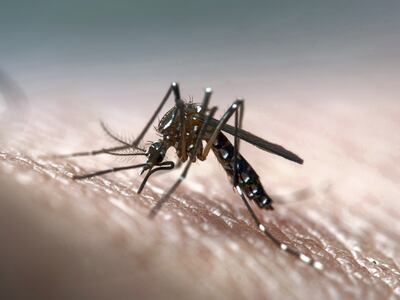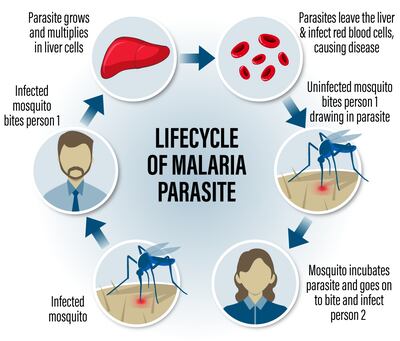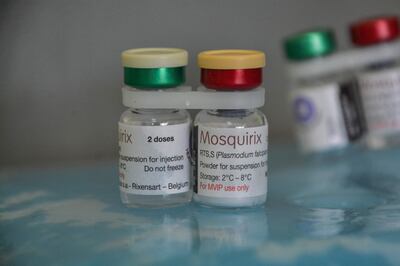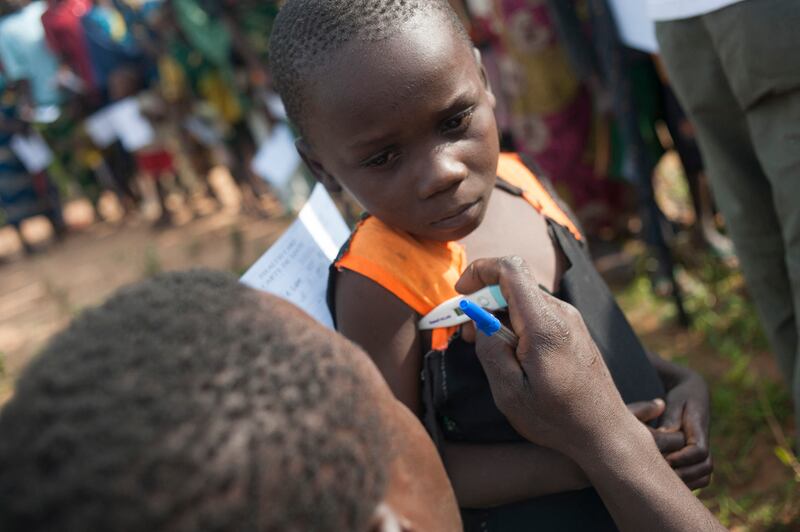The World Health Organisation’s approval this week for Mosquirix is a milestone in the fight against the deadly disease after decades of research.
The vaccine, developed by the British pharmaceutical company GlaxoSmithKline, is the first anti-malarial jab to get the green light.
Prof Matthias Marti, a parasitology professor at the University of Glasgow in the UK whose lab researches malaria, described approval as “very significant”.
“It’s the first parasitic disease to be targeted with a vaccine,” he said. “It’s the first approved malaria vaccine to be supported by the WHO. It also has a symbolic effect.”
While highly effective vaccines against Covid-19 were developed in less than a year, malaria, which is caused by a much more complex parasite, has proved to be a greater challenge.
The disease still causes a devastating toll, killing more than 400,000 people each year, including more than 260,000 under-fives in sub-Saharan Africa.
Why is the disease so deadly and how does the vaccine work?
What causes malaria?

Malaria is caused by a single-cell parasite, Plasmodium falciparum, which is neither a virus nor a bacterium, and is transmitted to people by infected mosquitoes.
“These parasites are much more complicated organisms and they have more complex ways to evade host immunity,” Prof Marti said.
When the mosquito injects a person with anticoagulant saliva – to stop their blood from clotting – a form of the parasite known as a sporozoite is injected into the person’s bloodstream.
Sporozoites travel to the liver, where they multiply, before entering red blood cells and replicating further, releasing another form of the parasite.
Disease symptoms are caused by the parasite’s effects on these red blood cells.
Subsequently, mosquitoes are infected when they ingest yet another form of Plasmodium falciparum when they feed on the blood of infected people, and the cycle continues.
How long has Mosquirix been under development?
Drugs against malaria were first made available in the 19th century and initially were produced from naturally occurring substances. Current drugs are synthesised artificially.
Research findings linked to a possible antimalarial vaccine date from the late 1890s, although modern-day efforts to develop a vaccine began in the 1960s with immunisation studies on mice.
Mosquirix, also known as RTS,S, was created in 1987 by researchers in GSK’s laboratories, according to the company.
Support for the project also comes from the likes of the Bill and Melinda Gates Foundation. GSK said development costs were $700 million.
Research funding for a vaccine may be more limited than it would have been had malaria continued to affect richer parts of the world.
In 2015, after the results of trials were reported, European drug regulators announced a “positive opinion” of the vaccine.
Over the past two years Mosquirix been given to 800,000 children in pilot programmes in Ghana, Kenya and Malawi, with 2.3 million doses administered, according to the WHO.

How effective is the vaccine?
It cuts the risk of deadly cases of malaria by 30 per cent, the WHO said, even in areas where precautionary measures such as the use of insecticide-treated bed nets are in place, and there is good diagnosis and treatment.
While efficacy is much lower than for some other vaccines, the WHO predicts that a wide-scale roll-out could save tens of thousands of lives a year.
Mosquirix is given in four doses, with numbers one, two and three administered monthly from the age of five months. The final dose should be given by the time the child is 18 months old.
Prof Marti said the vaccine alone was not going to eliminate malaria because of its modest efficacy, and even the addition of antimalarial drugs were not a complete solution, not least because resistance develops over time.
But combining approaches could prove effective. “There’s no single silver bullet,” he said.

How will the vaccine be distributed?
GSK has said it will provide 15 million doses of Mosquirix each year and, if funding is available, the company said roll-outs among children in sub-Saharan Africa could start in late 2022 or early 2023.
The company said it would make a 5 per cent profit on each dose and was not looking to recoup its development costs.
Other malaria vaccines are under development, including a modified form of Mosquirix called R21, which in relatively small-scale trials in Burkina Faso reported in April was found to be 77 per cent effective at preventing malaria over a year – the equivalent figure for Mosquirix is 56 per cent.
While Mosquirix represents a big step forward, the WHO said that getting a second malaria vaccine approved would be “highly beneficial”, especially because it would increase supply.
Prof Marti’s group hopes to better understand human-to-mosquito transmission of the parasite, which could be targeted by other vaccines. The key, he said, was for efforts to continue.
“Each time breakthroughs come, the danger is people become complacent and the support and political will falls,” he said.






